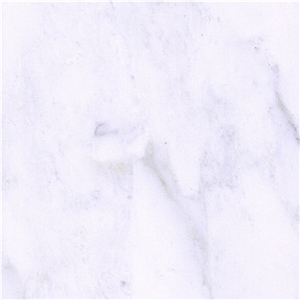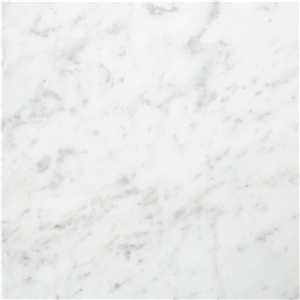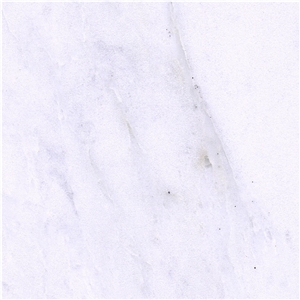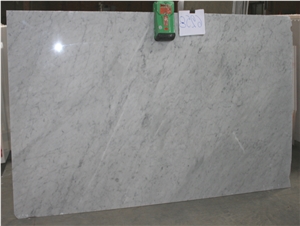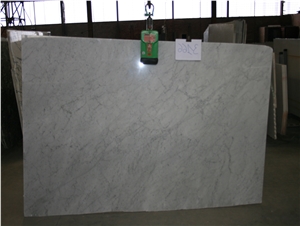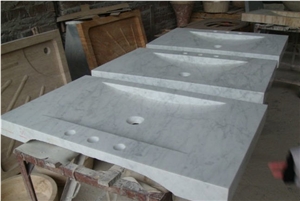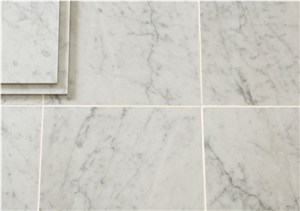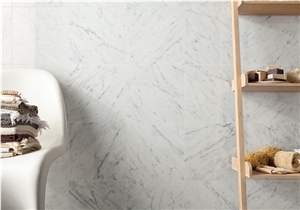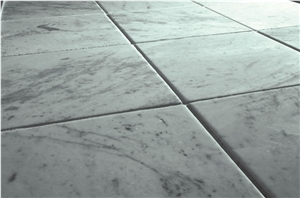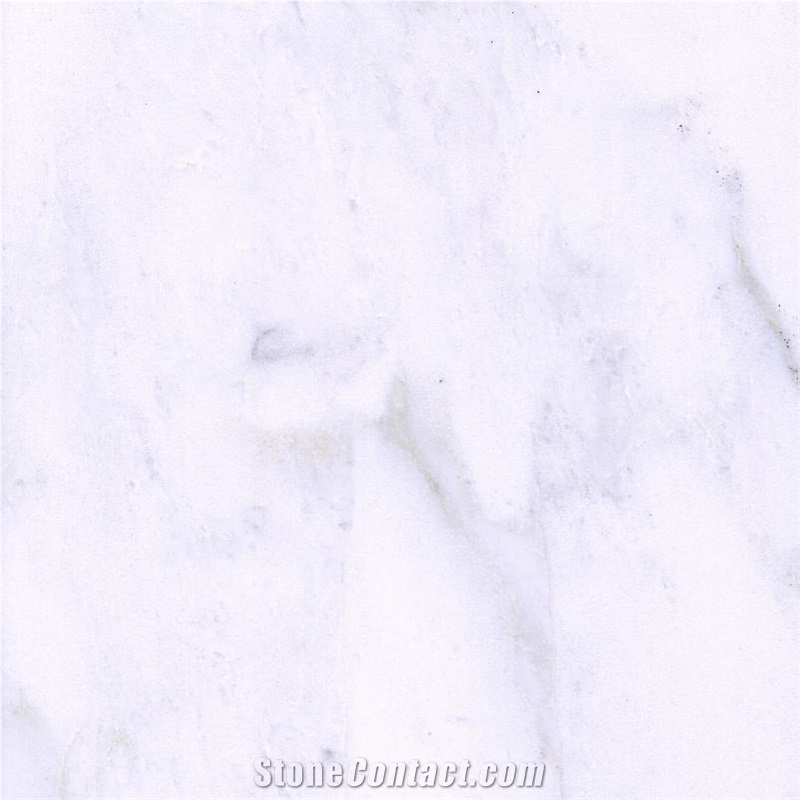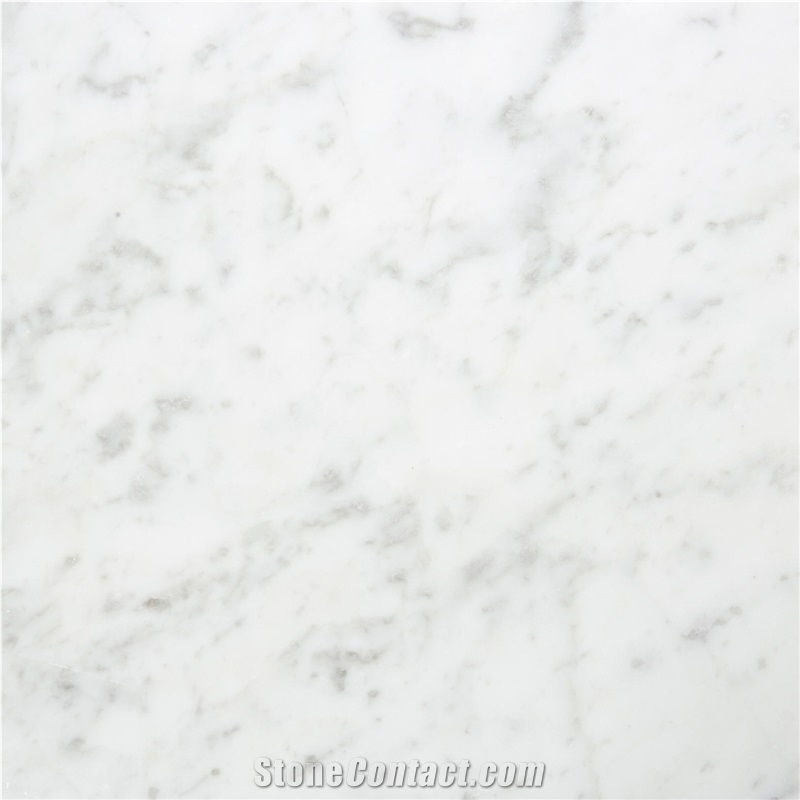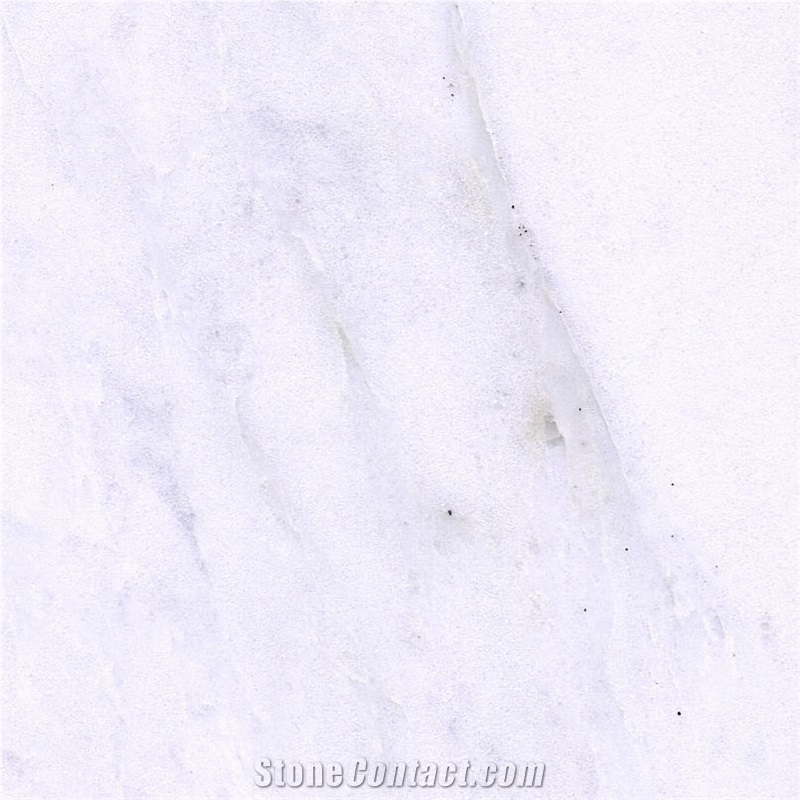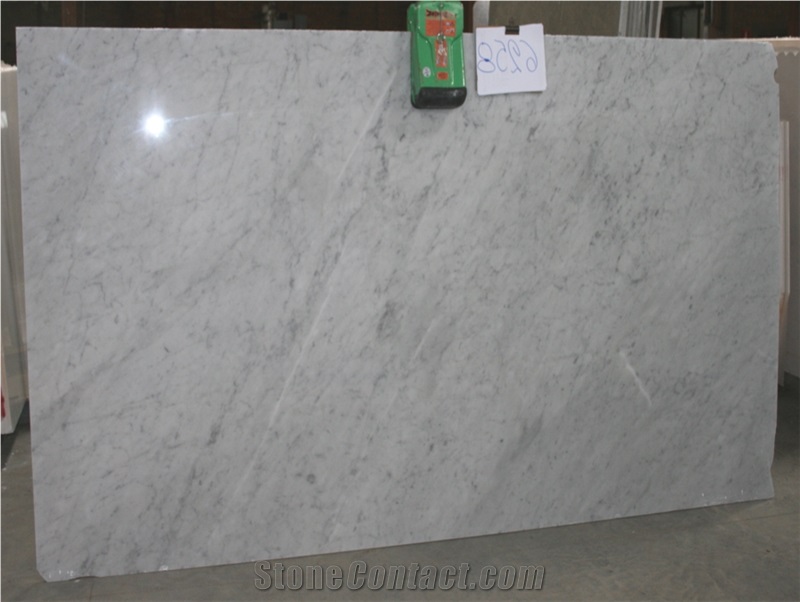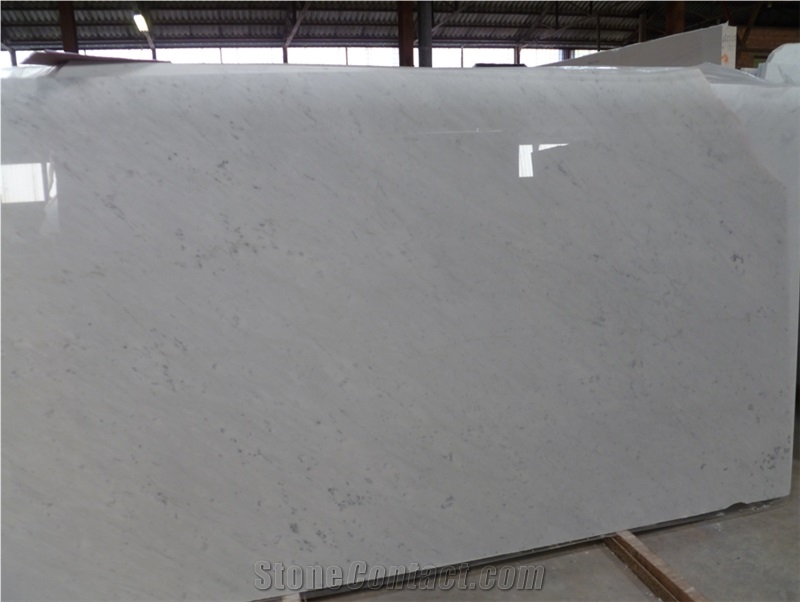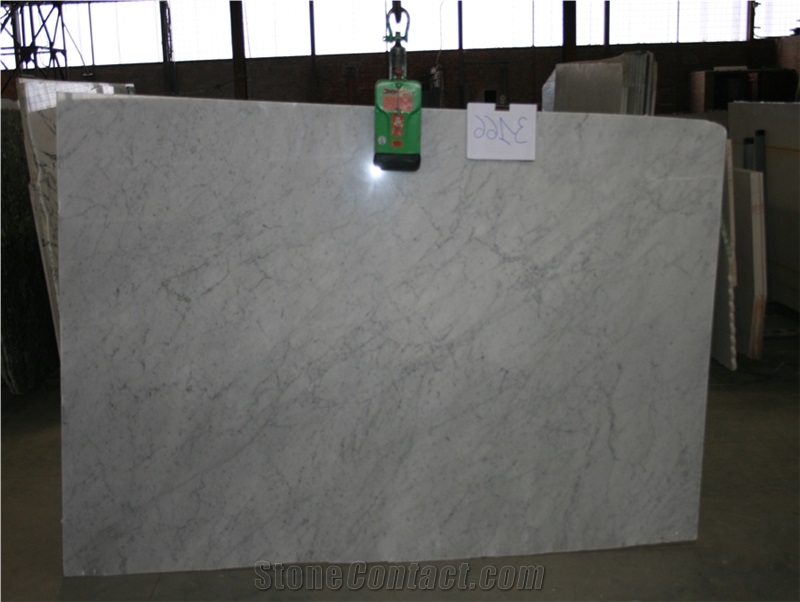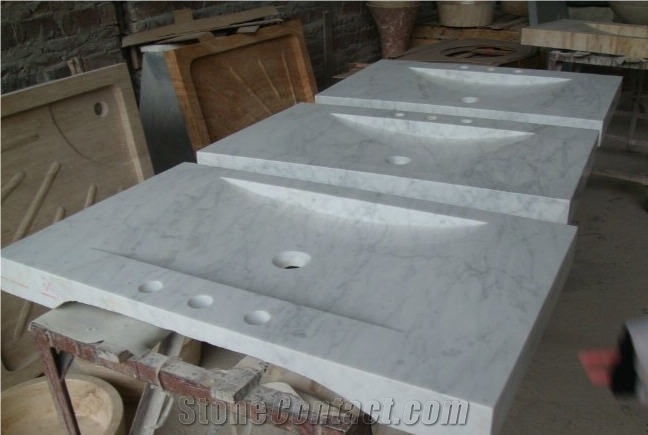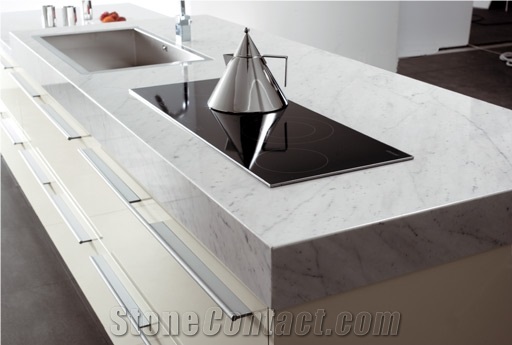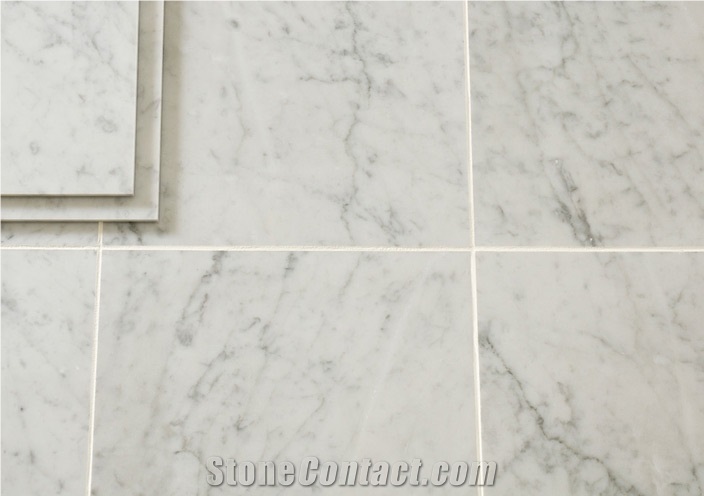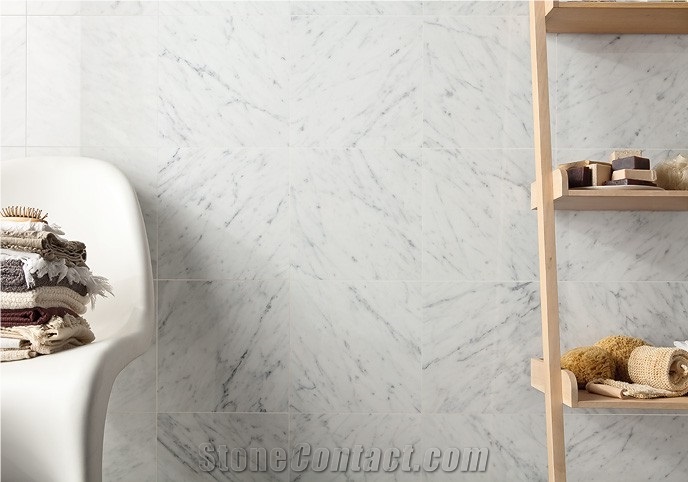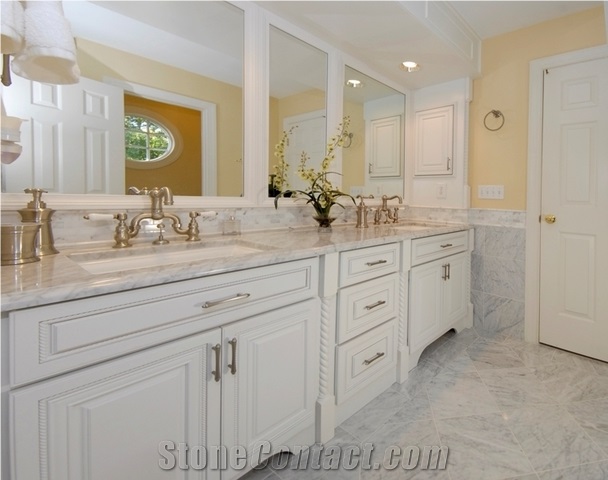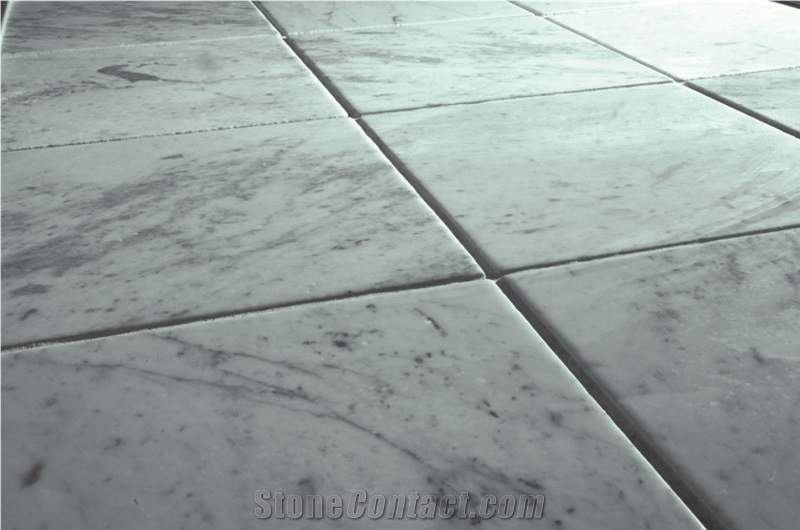Bianco Carrara C Marble
 Italy
(Monte Sagro, Alpi Apuane, Provincia di Massa Carrara, Toscana)
Italy
(Monte Sagro, Alpi Apuane, Provincia di Massa Carrara, Toscana)
The defining feature of Bianco Carrara C Marble is its milk white background, which exudes a sense of purity and elegance. This light and neutral hue serves as a serene canvas that beautifully showcases the marble's intricate details. The white background creates a sense of openness, making it an ideal choice for bright and airy spaces.
Adding to the stone's allure, thin veins and small marks in shades of grey to black criss-cross the surface in a staggered manner. These delicate veins resemble fine brushstrokes, creating an artistic and organic texture on the marble's canvas. The varying shades of grey to black provide a sense of movement and rhythm, capturing the eye and adding visual intrigue.
The small marks and natural imperfections on the surface lend a sense of authenticity to the stone, reminding us of its origin in the earth's depths. These marks contribute to the unique charm of each piece, making every slab a distinctive work of nature's art.
Bianco Carrara C Marble's intricate appearance and versatile color palette make it well-suited for a range of design applications. Whether employed for countertops, flooring, wall cladding, or decorative accents, it adds an element of refined beauty and visual interest to any space.
Furthermore, the durability and inherent elegance of marble ensure that Bianco Carrara C Marble remains a cherished feature in both residential and commercial installations. Its ability to withstand wear while maintaining its captivating appearance makes it a timeless choice for those seeking to create spaces of enduring charm.
In summary, Bianco Carrara C Marble, quarried in Provincia di Massa Carrara, Italy, features a milk white background with delicate thin veins and small marks in varying shades of grey to black. Its intricate and versatile appearance, combined with its durability, makes it a favored option for those aiming to infuse their spaces with a touch of natural beauty and artistic allure.
Petrographic definition: marble
Mass of Unit Volume: 2710 Kg/m3
Water absorption: 0.12%
Compression breaking load simple: 131 MPa
Breaking load simple compression after freezing: 128 MPa
Tangent: 59,500 elastic modulus MPa
Indirect tensile strength through Bending: 12.1 MPa
Relative Abrasion coefficient (referring to s. Fedelino granite): 0.58I
mpact resistance: minimum fall height: 56 cm
Linear thermal expansion coefficient: 5 x 6.3 10-0 c-1
Knoop microhardness: 1423 MPa
Divergences of hardness index: 1.16
Data source provider: University of Pisa-Politecnico di Torino

What is the difference between Bianco Carrara C Marble and Thassos Red Lines?

Can you put a hot pan on Bianco Carrara C Marble?

How thick is Italy's Bianco Carrara C Marble slabs?

What is the average hardness of Italy's Bianco Carrara C Marble?

Are there color variations of Italy's Bianco Carrara C Marble?

Can Italy's Bianco Carrara C Marble be used outdoors?

What is the difference between Bianco Carrara C Marble and Calacatta Arni?

Can Italy's Bianco Carrara C Marble be used in a dining room?

Can Italy's Bianco Carrara C Marble be used exterior applications in cold climates?

Will water stain on white marble go away?

What grade is Italy's Bianco Carrara C Marble?

Can Italy's Bianco Carrara C Marble be used in landscaping?

What is the coefficient of friction of Filled Italy's Bianco Carrara C Marble tiles?

Can Bianco Carrara C Marble be used as a fireplace?

Is Italy's Bianco Carrara C Marble an expensive stone?

Why is Bianco Carrara C Marble so expensive?

Are there different quality levels of Bianco Carrara C Marble?
-

 Italy
Italy
 13YRDiamond members are premium members on platform, providing members with comprehensive approach to promoting their products, increasing products exposure and investment return to maximize.
13YRDiamond members are premium members on platform, providing members with comprehensive approach to promoting their products, increasing products exposure and investment return to maximize.
 Verified Supplier is for prove company authenticity,including business license,trade license and effective office space,to enhance buyers' trust to suppliers and their products, reducing communication costs.
Verified Supplier is for prove company authenticity,including business license,trade license and effective office space,to enhance buyers' trust to suppliers and their products, reducing communication costs.
Contact Supplier
-

 China
China
 14YRDiamond members are premium members on platform, providing members with comprehensive approach to promoting their products, increasing products exposure and investment return to maximize.
14YRDiamond members are premium members on platform, providing members with comprehensive approach to promoting their products, increasing products exposure and investment return to maximize.
 Verified Supplier is for prove company authenticity,including business license,trade license and effective office space,to enhance buyers' trust to suppliers and their products, reducing communication costs.
Verified Supplier is for prove company authenticity,including business license,trade license and effective office space,to enhance buyers' trust to suppliers and their products, reducing communication costs.
Contact Supplier
-

 Italy
Italy
 11YRDiamond members are premium members on platform, providing members with comprehensive approach to promoting their products, increasing products exposure and investment return to maximize.
11YRDiamond members are premium members on platform, providing members with comprehensive approach to promoting their products, increasing products exposure and investment return to maximize.
Contact Supplier
-

 Italy
Italy
 Verified Supplier is for prove company authenticity,including business license,trade license and effective office space,to enhance buyers' trust to suppliers and their products, reducing communication costs.
Verified Supplier is for prove company authenticity,including business license,trade license and effective office space,to enhance buyers' trust to suppliers and their products, reducing communication costs.
Contact Supplier
-

Shenzhen Fenghua Industry Co.,Ltd.
 China
China
 3YRDiamond members are premium members on platform, providing members with comprehensive approach to promoting their products, increasing products exposure and investment return to maximize.
3YRDiamond members are premium members on platform, providing members with comprehensive approach to promoting their products, increasing products exposure and investment return to maximize.
 Verified Supplier is for prove company authenticity,including business license,trade license and effective office space,to enhance buyers' trust to suppliers and their products, reducing communication costs.
Verified Supplier is for prove company authenticity,including business license,trade license and effective office space,to enhance buyers' trust to suppliers and their products, reducing communication costs.
Contact Supplier
-

Fujian Province Ruifengyuan Industrial Co., Ltd.
 China
China
 Verified Supplier is for prove company authenticity,including business license,trade license and effective office space,to enhance buyers' trust to suppliers and their products, reducing communication costs.
Verified Supplier is for prove company authenticity,including business license,trade license and effective office space,to enhance buyers' trust to suppliers and their products, reducing communication costs.
Contact Supplier
-

Shenzhen Fenghua Industry Co.,Ltd.
 China
China
 3YRDiamond members are premium members on platform, providing members with comprehensive approach to promoting their products, increasing products exposure and investment return to maximize.
3YRDiamond members are premium members on platform, providing members with comprehensive approach to promoting their products, increasing products exposure and investment return to maximize.
 Verified Supplier is for prove company authenticity,including business license,trade license and effective office space,to enhance buyers' trust to suppliers and their products, reducing communication costs.
Verified Supplier is for prove company authenticity,including business license,trade license and effective office space,to enhance buyers' trust to suppliers and their products, reducing communication costs.
Contact Supplier
-

Hebei Rui Yuan Stone Sculpture Factory
 China
China
 12YRDiamond members are premium members on platform, providing members with comprehensive approach to promoting their products, increasing products exposure and investment return to maximize.
12YRDiamond members are premium members on platform, providing members with comprehensive approach to promoting their products, increasing products exposure and investment return to maximize.
 Verified Supplier is for prove company authenticity,including business license,trade license and effective office space,to enhance buyers' trust to suppliers and their products, reducing communication costs.
Verified Supplier is for prove company authenticity,including business license,trade license and effective office space,to enhance buyers' trust to suppliers and their products, reducing communication costs.
Contact Supplier
-

Goldtop ( Xiamen ) Imp. & Exp. Co., Ltd.
 China
China
 8YRDiamond members are premium members on platform, providing members with comprehensive approach to promoting their products, increasing products exposure and investment return to maximize.
8YRDiamond members are premium members on platform, providing members with comprehensive approach to promoting their products, increasing products exposure and investment return to maximize.
 Verified Supplier is for prove company authenticity,including business license,trade license and effective office space,to enhance buyers' trust to suppliers and their products, reducing communication costs.
Verified Supplier is for prove company authenticity,including business license,trade license and effective office space,to enhance buyers' trust to suppliers and their products, reducing communication costs.
Contact Supplier
-

 United States
United States
 10YRDiamond members are premium members on platform, providing members with comprehensive approach to promoting their products, increasing products exposure and investment return to maximize.
10YRDiamond members are premium members on platform, providing members with comprehensive approach to promoting their products, increasing products exposure and investment return to maximize.
Contact Supplier
The request includes: 1. surface finished, size 2. quantity required
 Coc***Wrote:
Coc***Wrote:
I want to buy Bianco Carrara C marble slabs.






